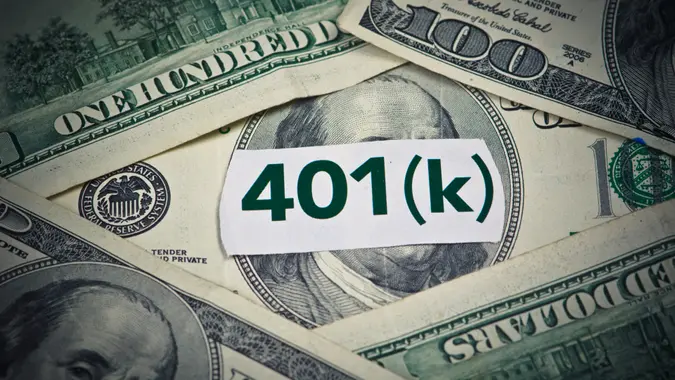How To Plan for Retirement If You Only Work Side Hustles

Commitment to Our Readers
GOBankingRates' editorial team is committed to bringing you unbiased reviews and information. We use data-driven methodologies to evaluate financial products and services - our reviews and ratings are not influenced by advertisers. You can read more about our editorial guidelines and our products and services review methodology.

20 Years
Helping You Live Richer

Reviewed
by Experts

Trusted by
Millions of Readers
For some, working gigs like driving for ride-share companies, doing freelance work or selling products online helps supplement their income from their primary job. Through their main employer, many people can save for retirement, such as by automatically deducting a percentage of each paycheck and investing within a 401(k).
But what if you only work side hustles? Across the U.S., 16% of working adults earn their primary income from being self-employed independent contractors or freelancers, according to CivicScience. And 29% of these people earn more than $100,000 working on their own, so it’s not as if all are living from gig to gig and can’t afford to save for the future.
If you only work side hustles, it’s important to still plan and save for retirement, and the good news is that the process doesn’t have to be all that different from how employees approach retirement planning. You might have to take a few extra steps, such as opening your own retirement accounts, but overall, it doesn’t have to be too complicated.
Opening a Retirement Account
As someone who only works side hustles, you likely have several options for opening tax-advantaged retirement accounts. For example, you might open a Roth IRA, traditional IRA, SEP IRA or Solo 401(k), said Aaron Cirksena, founder and CEO of MDRN Capital.
Each of these has its pros and cons, based on factors such as your income and projected future tax situation.
For example, “you can open up a Roth IRA which grows tax-free because contributions are made with after-tax dollars. When it comes time to withdraw, then you won’t have to pay federal taxes. You could also go with a traditional IRA, where your earnings grow tax-deferred,” Cirksena said.
There are income limits to a Roth IRA, but single filers with a modified adjusted gross income of less than $146,000 can contribute up to $7,000 per year for 2024.
If you want to put even more away for retirement, then you might go with an account like a SEP IRA or Solo 401(k), depending on factors like how much you earn. Take a look at the tax rules and eligibility requirements for different accounts to get a better sense of what works for you.
Investing for Retirement
While opening a retirement account can help you save more money for retirement by reducing taxes, it’s important to not let perfect be the enemy of good. If you’re facing analysis paralysis and that’s keeping you from actually putting money into an account and investing for future growth, then that’s probably not serving you very well.
Even if you’re not optimizing for taxes, investing is critical. Many people can’t directly save $1 million, for example, but due to the power of compounding returns, investing can get you there. If you put aside $750 per month for 30 years, that would equal $270,000. But if you invested that same amount every month at an 8% annual return, that would result in over $1 million after 30 years.
“Investing in general is always a great way to prepare for retirement. Open up investment accounts and make contributions to them regularly. And spread your investments across various assets,” Cirksena said.
You don’t have to get stuck on what to invest in either. Many investment brokerages offer quizzes or similar tools that can help guide you toward suitable investment products or investing styles. You might even find that a simple target-date fund, which invests in a variety of assets based on your expected retirement age, works for you.
And if you’re struggling to set aside enough money for retirement, consider using technology to your advantage to enforce discipline.
You can automate your savings, like automatically deducting a certain amount from your checking account every month, Cirksena said. So you don’t need to be an employee to take advantage of automatic deductions.
Overall, planning for retirement while only working side hustles doesn’t have to look much different than it does for employees, you just might need to take a little more initiative to get the ball rolling. But if you already took the initiative to find side hustles and make those work as your primary income sources, then you can likely do the same for figuring out how to open a retirement account and invest accordingly.
More From GOBankingRates
 Written by
Written by  Edited by
Edited by 

























